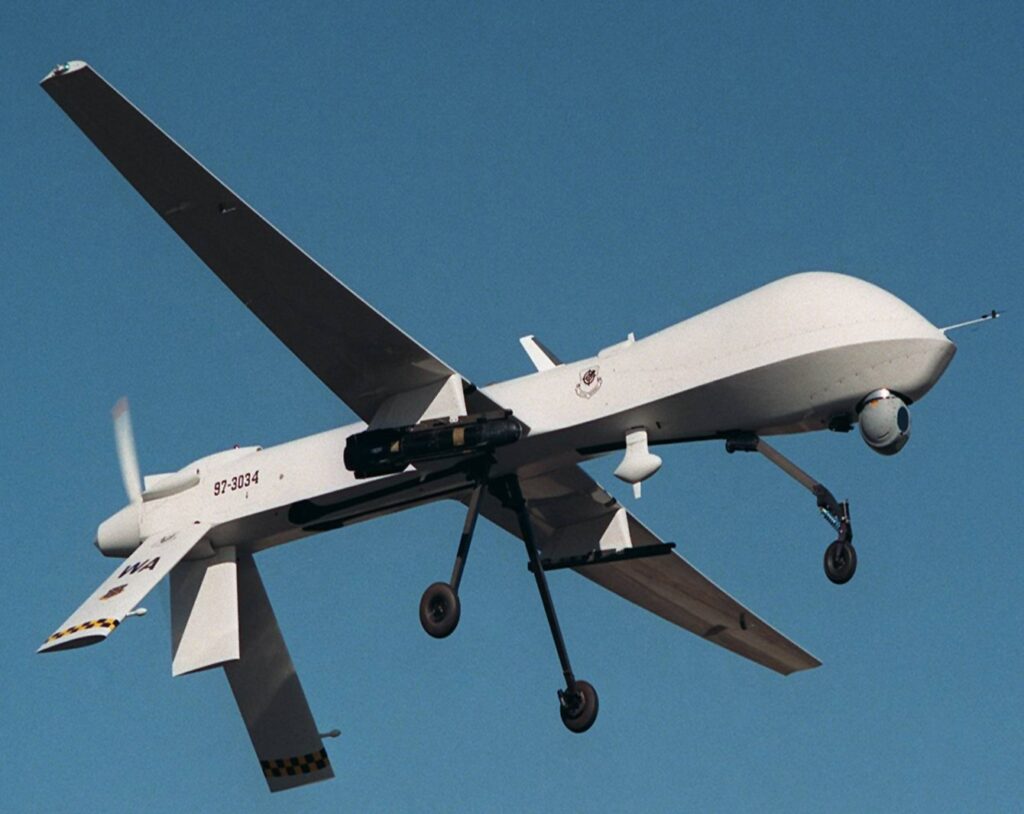
Predator drone
WASHINGTON: The Trump administration should unilaterally declare that it will no longer subject drone sales to export control restrictions under the Missile Technology Control Regime (MTCR), says a new Mitchell Institute study.
And Congress should use the 2021 National Defense Authorization Act (NDAA) to redefine unmanned aerial vehicles (UAVs) as aircraft, which not only remove them from MTCR restrictions but also would ease US domestic export controls, asserts the paper, “”Modernizing UAV Export Policy for Effective Coalition Forces,”.
“The US Congress should craft language in the 2021 NDAA that defines UAVs as aircraft, not cruise missiles, but as aircraft, and subject to the same export considerations as any other military aircraft,” said Heather Penny, senior resident fellow at Mitchell and the paper’s author, during a webinar today. “We believe that this language, a statute, would be sufficient to be able to remove UAVs from being subject to the MTCR guidelines.”
The 35-nation MTCR agreement requires a “strong presumption of denial” for sales of so-called Category 1 drones — those that can carry a 500 kilogram payload more than 300 kilometers. The Category 1 definition is considered as the minimum capability a missile needs to carry a nuclear warhead. Smaller unmanned aerial vehicles also are covered under MTCR’s Category 2 rules, but those export restrictions are less stringent.
Even the treaty-hating Trump administration sees the MTCR — a political agreement rather than a treaty — as a key tool in preventing the proliferation of ballistic and cruise missiles. This is despite its long-standing efforts to ease drone sales to allies, including through revamping US domestic law to allow “Direct Commercial Sales” by companies, rather than requiring all sales to go through the formal Foreign Military Sales process that requires approval by DoD, the State Department and Congress.
Indeed, over the past year the administration tried — and failed — to convince its MTCR partners to revamp the rules to allow drones flying less than 800 kilometers per hour to slip out from under the Category 1 rules, said Penny.
Washington is now expected to try again at the annual MTCR signatories meeting, she said, instead suggesting a 600 kph speed limit as the line of demarcation between the two categories of export restrictions. (The meetings are usually held in the fall, although there has yet to be an announcement of the 2020 dates.)
But, Penny argued, even if this new effort comes to fruition, it would fail to fix the underlying problem of allowing allies to buy high-end US combat drones — and preventing them from fully integrating with US operations. Secondly, she asserted, complying with MTCR rules “distort the market” in favor of Chinese sales, she said, since China is not a member of the MTCR and has few formal restrictions on arms exports.
“Continuing to adhere to and apply MTCR guidelines to UAVs facilitates Chinese strategic interests,” Penny said. “It’s working against US interests.”
Keith Webster, former DoD head of defense cooperation, agreed — calling efforts to revise the MTCR as a “Band-Aid” that would soon loose viability because of the rapid pace of technology improvement.
“I wish we would act unilaterally,” he told the Mitchell Institute webinar. “We have the ability to act unilaterally. And I would like to see us do so very soon. I have great hopes that this administration, with its bold unilateral actions on so many fronts, would take unilateral action with this regime on UAVs.”
That doesn’t mean, Webster hastened to add, pulling out of MTCR itself. “Stay in the MTCR,” he said. “It served its purpose.”
The experts acknowledged that a unilateral US move to exempt UAVs from MTCR could spur other nations to do the same for their own weapons systems that could exacerbate nuclear proliferation.
Penny stressed that it was key for the US to renew its commitment to nonproliferation of ballistic and cruise missiles, and support MTCR’s rules for those systems.
Saying that “we need to be honest with ourselves about the implications” while seeking “creative solutions” to the UAV issue, Webster seemed to suggest that ultimately the US may decide the MTCR itself isn’t worth the trade off. “There are challenges with compliance within the regime with at least one member,” he warned.
As Breaking D readers know, US military leaders and Congress have sounded the alarm on the proliferation of cruise missiles by Russia (an MTCR member) and China that can more easily slip through US ballistic missile defense systems. This is especially true for hypersonic missiles, which have speeds above Mach 5 and while visible on radar are extremely hard to target.
Air Force picks Anduril, General Atomics for next round of CCA work
The two vendors emerged successful from an original pool of five and are expected to carry their drone designs through a prototyping phase that will build and test aircraft.


























